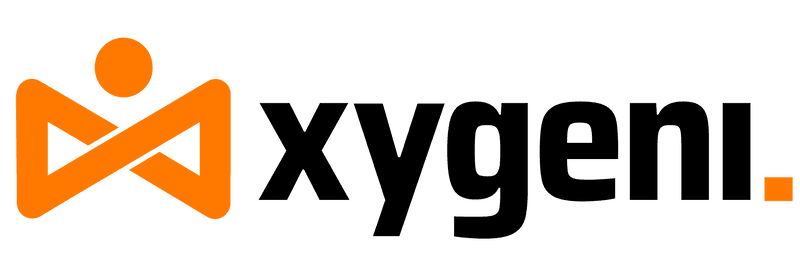What is OWASP? It stands for the Open Web Application Security Project, a nonprofit organization dedicated to enhancing the security of software. For professionals in development and security, particularly those working in DevSecOps, understanding what is OWASP is essential. It provides tools, best practices, and knowledge critical to building secure applications.
Grasping what is Open Web Application Security Project’s mission and contributions is essential for teams aiming to minimize risks, meet security benchmarks, and develop resilient software from the outset.
Definition:
What does OWASP stand for
To answer what does OWASP stand for: it refers to the Open Web Application Security Project, founded in 2001 as a global initiative that promotes open-source resources to help organizations design, build, and manage secure software. The “open” in OWASP emphasizes its commitment to making all materials and tools freely accessible. Its contributors include developers, testers, security engineers, and other IT professionals who collaborate to produce peer-reviewed content. This model ensures the broad availability of reliable guidance without licensing restrictions.
OWASP’s Mission in Software Security #
Understanding what is OWASP includes recognizing its mission: to empower software teams with actionable security knowledge. It bridges the communication gap between development and security roles by publishing:
- Secure coding standards
- Educational resources
- Security testing tools
- Widely adopted frameworks such as the OWASP Top 10
These offerings help lower the entry barrier for integrating security practices into every stage of the software development lifecycle, aligning closely with DevSecOps principles.
Why OWASP Matters to DevSecOps? #
What is OWASP in the context of DevSecOps? It is a fundamental resource that embeds security within continuous integration and deployment workflows. Understanding what does OWASP stand for helps teams make the most of the tools and knowledge to detect vulnerabilities early, apply secure coding techniques and to train developers on real world threats. It also supports core activities like threat modeling, secure configuration, and code auditing.
The OWASP Top 10: A Fundamental Reference #
A key deliverable from what is Open Web Application Security Project is the OWASP Top 10, which outlines the most significant security issues in web applications. Updated regularly based on global data, it helps teams prioritize and understand major threats like:
- Broken Access Control
- Cryptographic Failures
- Injection
- Insecure Design
Security professionals frequently use the Top 10 as a basis for compliance, code inspection, and developer education. Knowing what does OWASP stand for includes understanding the role of this critical reference in shaping secure development standards.
Other Projects Vital to DevSecOps #
Beyond the Top 10, OWASP offers a range of tools and frameworks well-suited to DevSecOps methodologies:
- ASVS (Application Security Verification Standard): Sets out requirements for secure app development and testing.
- SAMM (Software Assurance Maturity Model): Assesses and enhances organizational software security practices.
- OWASP ZAP: An open-source DAST tool used to identify vulnerabilities through automated scans.
- Dependency-Check: Analyzes project dependencies for known security issues.
- Cheat Sheet Series: Provides concise best-practice advice for developers.
These initiatives underscore the mission of what is Open Web Application Security Project: creating accessible, actionable support for secure software delivery.
Compliance Implications #
Although not a regulatory entity, OWASP is a major influence in compliance frameworks. For example:
- PCI DSS incorporates OWASP guidelines for secure code development.
- ISO/IEC 27001 and NIST frameworks align with OWASP’s risk management strategies.
- Security audits commonly benchmark against the OWASP Top 10.
By aligning with what the Open Web Application Security Project provides, organizations can better demonstrate security diligence and meet audit expectations. Understanding what does OWASP stand for is critical when using its tools to support governance and regulatory needs.
Community and Vendor Neutrality #
One of the most important aspects of what does OWASP stand for is its vendor-neutral, community-driven model. OWASP operates without commercial bias, ensuring that tools and documentation serve diverse development environments and security needs.
This impartial approach has established what is OWASP as a trusted authority across industries. Its adaptable frameworks are suitable for a wide range of platforms, from cloud-native applications to legacy systems.
Value to Security Leadership #
For security leaders, understanding what does OWASP stand for provides essential structure for building and managing application security programs. Its resources support:
- Strategic planning and roadmap development
- Justifying security investments
- Designing developer training programs
The OWASP Top 10, in particular, facilitates communication between technical and non-technical stakeholders by translating risks into clear, understandable terms.
So, Why It Is Indispensable to DevSecOps? #
Now that you know what it is, you can start integrating security throughout the development lifecycle, enabling: early vulnerability detection, continuous security validation, compliance support, scalable security training and much more. From dependency scanning to secure coding to compliance readiness, it provides a foundation for organizations striving to build security into every layer of their software architecture. When you ask what does OWASP stand for, you’re referring to one of the most impactful forces in modern application security.
Platforms like Xygeni complement OWASP’s goals by enabling software supply chain security and visibility across CI/CD pipelines, further supporting the implementation of its principles in real-world DevSecOps environments.
#
Watch our Product Tour or Get a Free Trial!
